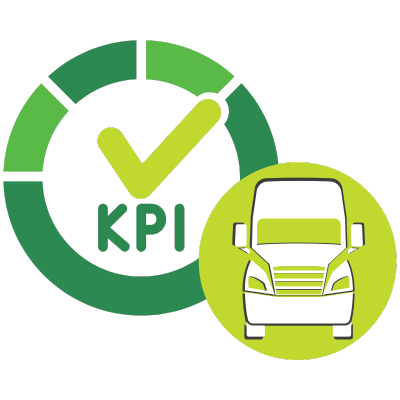In today’s competitive transportation and supply chain landscape, understanding your financial performance isn’t just smart; it’s essential for sustainability. Key Performance Indicators (KPIs) are quantifiable measurements used to evaluate business performance. Understanding and analyzing your KPIs help guide strategic decisions and reveal opportunities for growth and optimization.

Revenue per Mile:
With dynamic pricing, your rates will vary for each shipment. It’s important to understand your average revenue per mile for different routes and services. For instance, you may find your long-haul routes average $2.50 per mile, while shorter, local routes may generate $3.25 per mile.
Cost per Shipment:
By tracking the exact cost of moving each shipment, you can pinpoint inefficiencies and optimize pricing strategies. Costs to include when calculating your Cost per Shipment include fuel, labor, truck maintenance and carrying costs.
Gross Margin Analysis:
Your Gross Margin is the difference between your revenue and the direct costs associated with generating that revenue. It’s important to understand not just your revenue, but your gross margin to understand your true profitability.
Fleet Utilization Rate:
Your Fleet Utilization Rate calculates the time your trucks are being used to carry shipments (generating revenue!) compared to the total time available. A higher utilization rate indicates greater efficiency which leads to greater profitability.
Lifetime Customer Value (LTV):
Lifetime Customer value is the average value (typically measured in gross margin dollars) over the average lifespan of a customer. If your typical customer generates $2,000 in gross margin dollars each month, and you keep customers, on average for 3 years, your lifetime customer value is $108,000.
Customer Acquisition Cost (CAC):
Customer Acquisition Cost measures the cost required to acquire a customer (marketing spend, ads, sales costs, and onboarding costs). It’s important to understand your CAC to determine your Return on Investment of your marketing and sales spend.
Operating Ratio:
This metric reveals your operational efficiency by comparing operating expenses to revenue. Your Operating Ratio is the percentage of revenue that is used to cover your operating expenses, therefore, a lower Operating Ratios shows greater efficiency, since you’re using less of your revenue to cover your operating expenses. A lower operating ratio may indicate that you run “lean”.
A logistics company that not only understands its KPIs, but also measures them regularly and uses that data to drive business decisions, will see greater long-term growth and sustainability. Check out RXO’s study on logistics companies and KPI’s.
Posted in Accounting Solutions, General, Small Business Accounting
